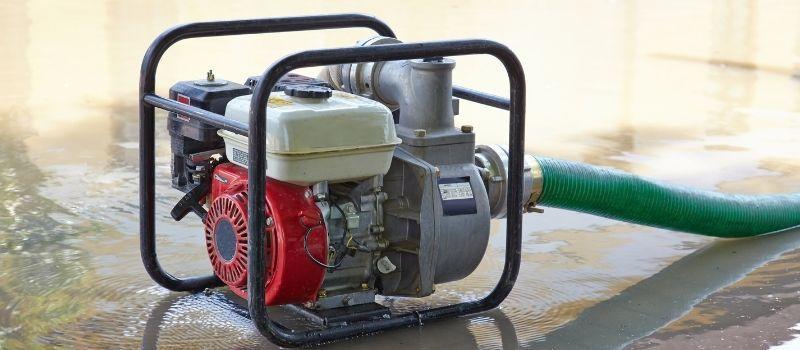Finding the right pump can be a difficult task. There are many options out there, and each one does a different job. Also, you need to consider other important questions that will affect what pump is right for you.
To help with your decision, we have put together a little guide to the types of pumps we sell and their benefits.
Different types of pumps
Submersible pumps
Dewatering pumps
Dewatering pumps offer a temporary solution to emergencies such as flooding. Designed to remove flood water quickly to prevent further flooding. These types of pumps are known for their efficiency and quick drainage of floodwater.
These are ideal for businesses or properties to have on hand for when the British rainfall takes a turn for the worst.
Please note that they are only for temporary use and don’t offer a long-term solution to flooding.
Submersible pumps
Designed to be submerged within water that needs pumping out, they are used as a filtration pump for fish tanks or to pump sewerage water.
Like the centrifugal pumps, a submersible pump has a motor that powers impellers to push water out. Despite having a motor on the pump, they are often silent as the water will absorb noise. Also, using submersible pumps won't use much energy when removing or filtering water.
There are negatives to using submersible pumps that you will need to consider. The seal that protects the motor from the water can corrode over time, allowing water in, potentially damage the motor. Another issue you may face is the seal is hard to remove, making removing or repairing the motor difficult.
Sewage pumps
Sewage pumps are used to transfer sewage liquids and solids from one location to another. The solids pumped will be up to 2” in diameter and is pumped from a sewage basin to a septic tank.
You will find the sewage pump installed at the lowest point of the sewage basin.
Surface dewatering pumps
Used below groundwater level to reduce that water level and ensure it is maintained at this level. These are often installed in buildings that are below groundwater level.
Irrigation pumps
Irrigation pumps are used to pump water from a lower level to a higher level. It is commonly used to provide water for a section of land.
They’re not usually equipped with variable speed drives and are typically controlled by turning the pump on and off.
Surface pumps
Centrifugal Pumps
Powered by a motor that provides rotational energy to impellers that moves fluid to the pump to remove water quickly. The power of the pump depends on the engine type you purchase and the power it can create. To understand the power of the motor, you will need to check the litres per minute (LPM) that the motor can achieve. We sell a range of LPM pumps, from 140 LPM up to 1060 LPM.
You will frequently find the centrifugal pumps used in industrial and agricultural use. Their high power makes them suitable for emptying large ponds or lakes, flooded buildings or cellars.
Water boosting pumps
Water boosting pumps are used when demand of water is high, resulting in low water pressure. By using a water boosting pump, you increase the water pressure.
They are often used in flat blocks where demand for water is high. They can help supply toilets and washing machines with water to function.
Rainwater harvesting pumps
Designed to be used in rainwater harvesting kits. They work by pumping water collected in the water butt to wherever it is needed. This may be in a toilet, a garden hose or a washing machine.
We hope you found this quick guide to pumps useful, and you now have a clearer idea of which pump will be best for you.
If you’d like to find out more about the pumps we have available, please contact our sales team on 01777 858009 or email sales@kingfisherdirect.co.uk.

